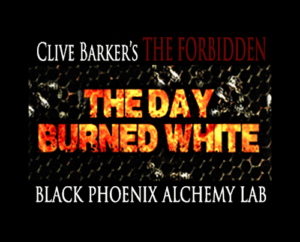Plaster
- Sorry, this product cannot be purchased.
-
The Day Burned White Perfume Oil
Add to cartUsing the door, which was centrally placed in the wall like a mouth, the artists had sprayed a single, vast head onto the stripped plaster. The painting was more adroit than most she had seen, rife with detail that lent the image an unsettling veracity. The cheekbones jutting through skin the color of buttermilk; the teeth, sharpened to irregular points, all converging on the door. The sitter’s eyes were, owing to the room’s low ceiling, set mere inches above the upper lip, but this physical adjustment only lent force to the image, giving the impression that he had thrown his head back. Knotted strands of his hair snaked from his scalp across the ceiling. Was it a portrait? There was something naggingly specific in the details of the brows and the lines around the wide mouth; in the careful picturing of those vicious teeth. A nightmare certainly: a facsimile, perhaps, of something from a heroin fugue. Whatever its origins, it was potent. Even the illusion of door-as-mouth worked. The short passageway between living room and bedroom offered a passable throat, with a tattered lamp in lieu of tonsils. Beyond the gullet, the day burned white in the nightmare’s belly. The whole effect brought to mind a ghost train painting. The same heroic deformity, the same unashamed intention to scare. And it worked; she stood in the bedroom almost stupefied by the picture, its red-rimmed eyes fixing her mercilessly.
Plaster and spraypaint, mottled with buttermilk – sweet, chalky, and edging on sickly. White and golden amber beams of daylight pour through the belly of the scent, while oakmoss and Spanish moss add a touch of decay.
